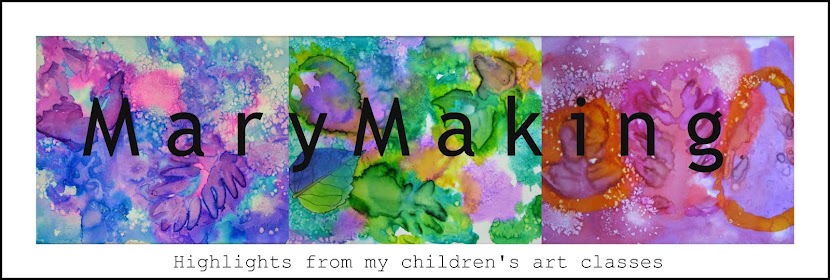








 I had to join in on the fun as well.
I had to join in on the fun as well.

 Sometimes I don't have to look any farther for inspiration for an art lesson than my daughter's bookshelf. So my Thursday afternoon group of Kindergarten thru 3rd graders took a look at the adorable (and familiar to all of them) Olivia by Ian Falconer. In the story Olivia's mother takes her to an art museum on rainy days. She always heads straight for her favorite Degas ballet piece. From there she stands in front of Jackson Pollock's Autumn Rhythm #30. Her reaction, "I could do that in about five minutes."
Sometimes I don't have to look any farther for inspiration for an art lesson than my daughter's bookshelf. So my Thursday afternoon group of Kindergarten thru 3rd graders took a look at the adorable (and familiar to all of them) Olivia by Ian Falconer. In the story Olivia's mother takes her to an art museum on rainy days. She always heads straight for her favorite Degas ballet piece. From there she stands in front of Jackson Pollock's Autumn Rhythm #30. Her reaction, "I could do that in about five minutes."So I thought it would be fun do a line drawing of Olivia the pig with smudged charcoal shadows and her trademark red outfit and combine it with a splattered piece. The boys swapped the sailor dress for a red turtleneck, turning their pig into more of an Oliver. (my apologies to Mr. Falconer :) The children took turns with some Abstract Expressionism using watered down black and white tempera on a sheet of construction paper. The pigs (all so wonderfully different and full of humor and character) were cut out and placed in front of their splattered art piece and mounted on black posterboard. Nice job kids!





















